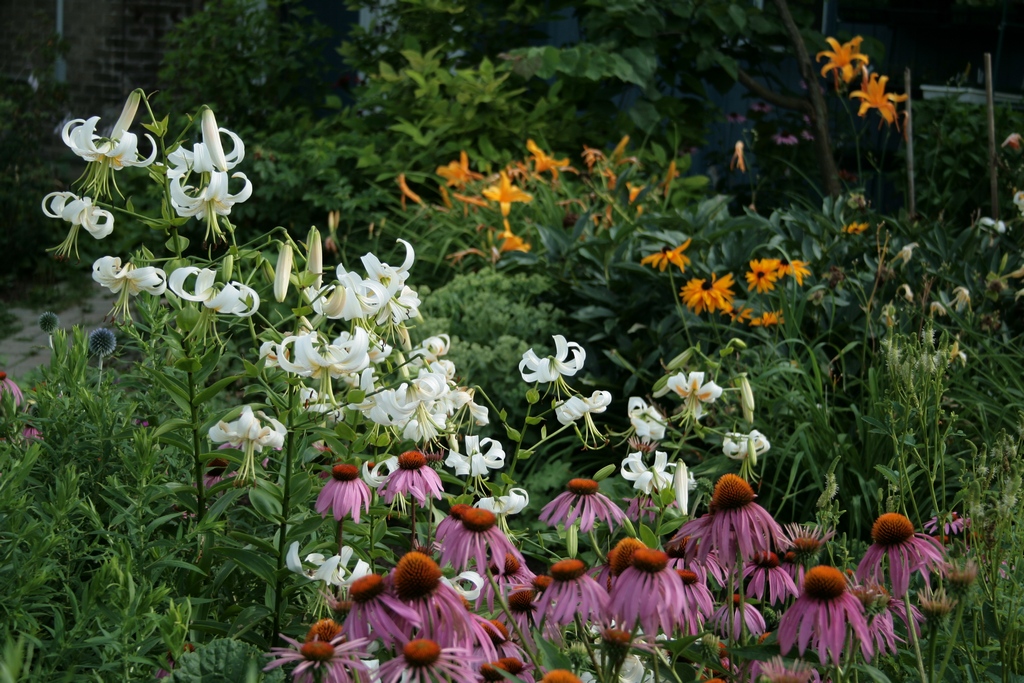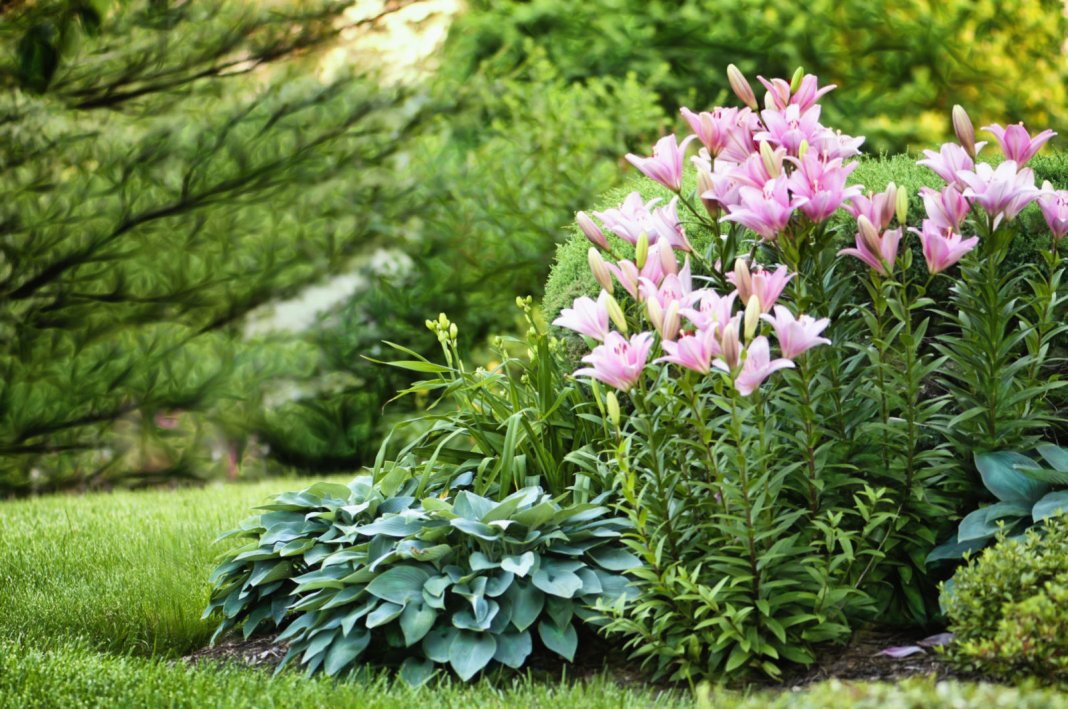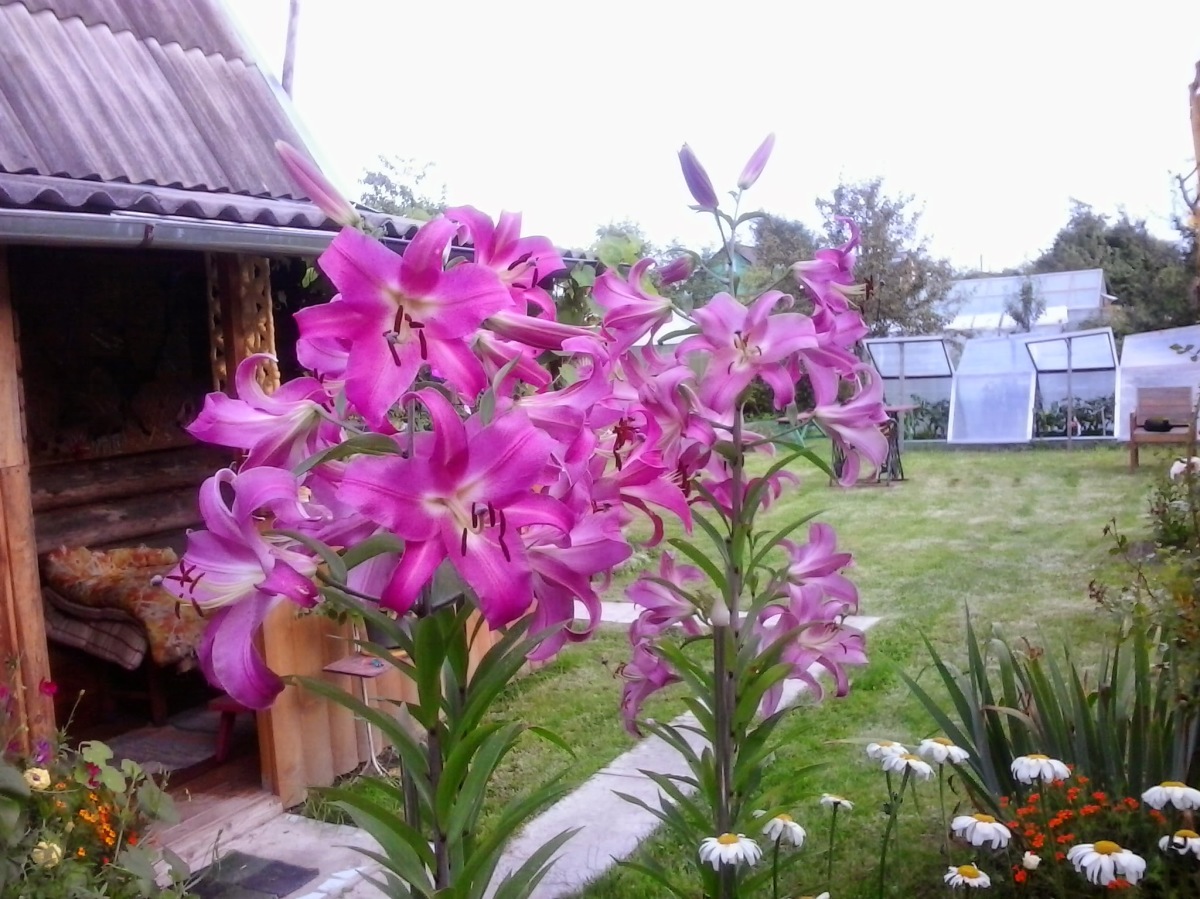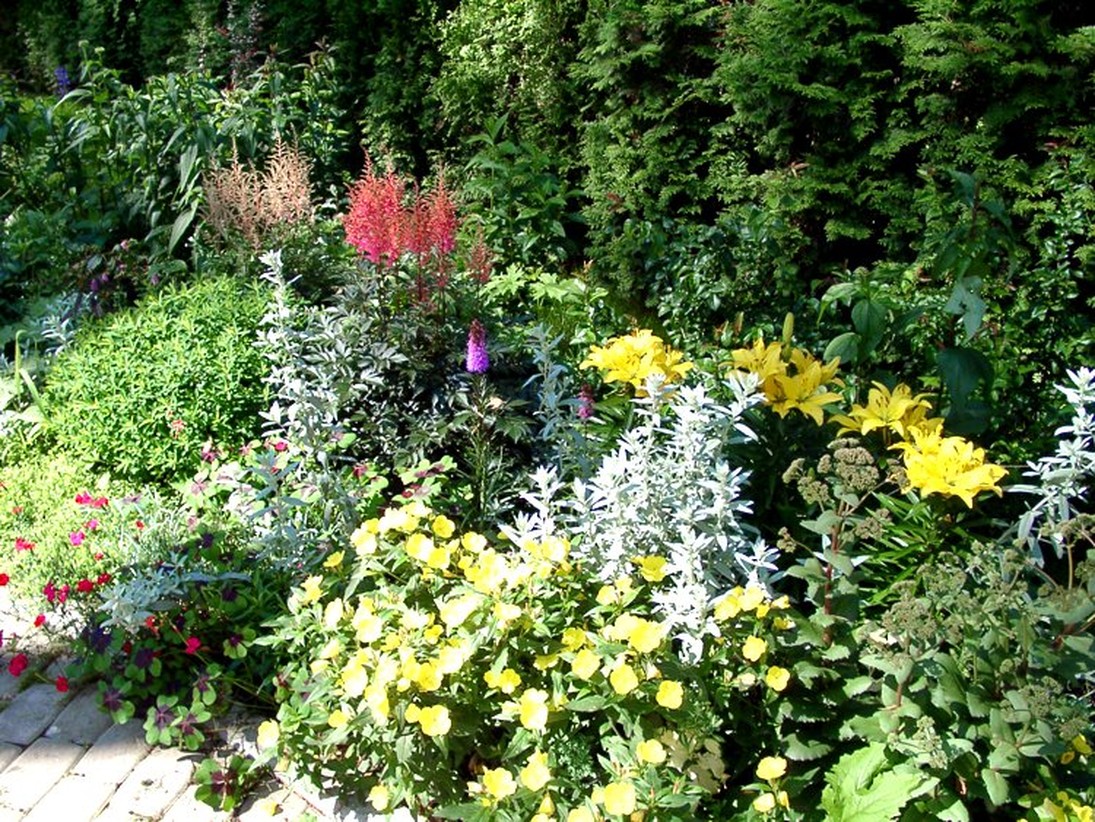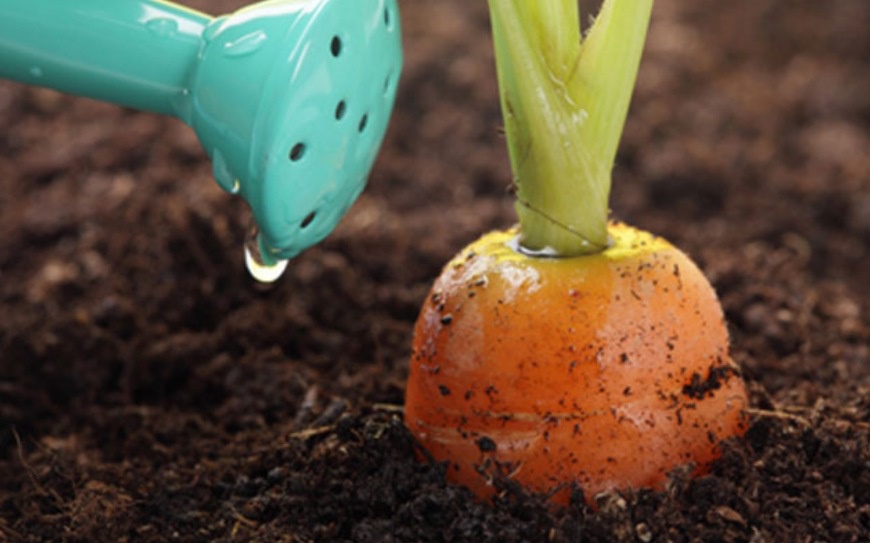Content:
- The basics of landscape design
- Lilies in landscape design
- Lily flower garden
- Lilies - what are they combined with in a flower bed?
- How to plant lilies to make them look beautiful
- Flowerbed with lilies and other flowers: scheme
- Mixborder with lilies
- Curb lilies
- What to plant with lilies to close after flowering
Lilies are beautiful, but rather capricious flowers. If they are not looked after, they quickly grow, and the site takes on an untidy, neglected look. Plants also take deep roots and are very difficult to dig out. In order for lilies to look beautiful on a garden plot or in a cemetery, you need to know some secrets of their cultivation and placement.
The basics of landscape design
Under the concept of "landscape design" it is customary to understand the improvement of the surrounding space outside the house (in a garden, in a park or in a public garden, in the territory adjacent to administrative buildings). In landscape design, cultural and wild plants are actively used, giving the space an elegant and original look. When designing any space, keep in mind the following:
- The elements used must be compatible with each other.
- Plants must be selected in such a way that something constantly blooms on the site or in the country, then there will be no feeling of emptiness. It is ideal that the flowers bloom one after another: as soon as one plant finishes blooming, another will bloom after it. Ideally, this should continue throughout the summer.
- The elements of landscape design should be in harmony with the architecture. The decor of flower beds and beds should overlap with the design of nearby buildings.
- It is advisable that the plantings are easy to care for, then the site will not look neglected even in the absence of regular maintenance.
By observing these principles, you can intelligently equip the surrounding space. This is done by both professional designers and amateur summer residents.
Lilies in landscape design
Summer residents often think about how to plant lilies so that they look beautiful on the site. This flower is very popular in landscape design due to its unpretentiousness, ability to adapt to any environment and beautiful, large flowers of various colors.
The main thing is to know what to combine with lilies in a flower bed. When placing them in the surrounding space, keep in mind the following:
- they look good in separate groups of 4-6 flowers each;
- if a lily is planted together with other plants, it will be in the spotlight, and other flowers may look worse, "get lost" against its background;
- undersized varieties - ideal for curbs;
- tall varieties can be placed along the fence, like a hedge.
Also tall species look good under large fruit trees (apple or pear). Tall bushes in landscape design usually occupy a central position.
Lily flower garden
Inexperienced summer residents often wonder whether it is possible to plant lilies of different colors next to each other. There is an opinion that it is impossible to plant specimens of different colors together, since as a result of cross-pollination, they will all acquire the same color. However, biologists say that this is just a delusion. Plants do not change color when pollen is transferred from one bush to the next. Therefore, you can safely plant multi-colored specimens together.
As for different species, it is better not to plant them side by side, because:
- Everyone has different requirements for moisture and soil composition.
- Different types require different care.
- Diseases and pests can move from one variety to another, and all varieties have different susceptibility to it.
- Some varieties do not grow well next to each other.
Therefore, the ideal option is a joint group planting of specimens of the same variety.
Lilies - what are they combined with in a flower bed?
If lilies grow in the garden, the combination with other flowers in the flowerbed can be very different. Most often, novice florists practice combining with options such as:
- peonies,
- roses,
- day-lily,
- discount.
Each of these combinations has its own characteristics. Peonies and lilies are a great option. The lush foliage of peonies favorably sets off the beauty of other flowers, in addition, these plants bloom one after another: first peonies, then lilies.
The one who plants lilies with irises makes a mistake. These plants have different flowering times. When irises bloom, watering must be limited, and their "neighbors" at this time are only blooming and, on the contrary, need strong soil moisture. Therefore, they do not have the best compatibility. But the friendship of the daylily and the lily, on the contrary, is beyond doubt, because you need to look after them in about the same way, and these flowers also have a similar aroma.
Lily will be the perfect complement to the discount. The Thunberg variety, which is short and large, bright orange flowers with dark specks, is well suited for rabatki. This is one of the most popular varieties among Russian summer residents.
How to plant lilies to make them look beautiful
You need to know how to combine different types with each other. To make the flower garden look beautiful, the bushes are placed according to the following pattern:
- The highest varieties are planted in the background.
- Tall lilies are placed isolated from each other in groups of 4-6 flowers, along the entire rear edge of the land.
- In the center are placed varieties of medium height, in groups or separately (depending on the area of the site and the availability of free space).
- The lowest bushes with small flowers are placed in the foreground.
This scheme has the following advantages: all specimens are clearly visible, the high ones do not obscure the low ones, so the sun is enough for everyone.
Flowerbed with lilies and other flowers: scheme
In order not to puzzle over which flowers the lilies are combined with, you can use the simplest version of the combined planting. Most often, summer residents practice a combination with climbing roses, they are planted as additional elements. When laying out a flower bed, you should adhere to the following scheme:
- Climbing (Canadian or musky) roses need to be planted in the background.
- In front of the rose bushes, low-growth lilies are planted in the ground.
- The bulbs of tall species are planted behind, directly under the roses.
- Hosta is planted around. This culture is excellent for mulching the soil.
The main advantage of this scheme is that all components have approximately the same requirements for moisture and chemical composition of the soil. Such a flower bed is as easy as possible to maintain. The disadvantage is that such a scheme looks effective only on a large, spacious area. If the area is small, it is better to combine lilies with peonies, planting plants in a checkerboard pattern.
Mixborder with lilies
When planning a breakdown of a mixborder with lilies, you must adhere to the following planting scheme:
- Tall specimens are placed in the background.
- If the mixborder has two sides, the place for tall varieties is in the middle.
- Low plants are placed at the edges.
- In the first year after planting, it is advisable to supplement the mixborder with annual crops, inscribing them in the free space. Later, when the flowers grow, this will no longer be necessary.
When breaking down a mixborder, it should be borne in mind that lilies are not planted close to each other, there should be free space between them, as they grow rapidly. But do not make this distance too large, otherwise the flower garden will look half-empty, unfinished. Therefore, before planting lilies beautifully, it is advisable to think carefully about the size of the gaps between them.
Curb lilies
For the decoration of borders, specimens of low and medium growth are best suited, blooming long and luxuriantly, with friendly blooming of flowers. It is desirable that they are all the same color, so the border will look more spectacular. You can also plant species with flowers of two contrasting colors, alternating them in a checkerboard pattern. Varieties should be selected so that the flowering process is not interrupted during the summer.
What to plant with lilies to close after flowering
Growing lilies is not easy, but their flowering time does not last long. After the end of flowering, the flower garden takes on an ugly appearance. When everything fades, many summer residents try to cut the stems at the root as quickly as possible in order to close the ugly void. But you shouldn't do that. You need to cut it off gradually, and not all the stems, but only the boxes with seeds, so that the plant does not waste energy on their formation.
If you follow a few simple rules, a flower bed with lilies will look elegant and well-groomed at any time. It is ideal for decorating not only summer cottages, but also public places (parks, squares, school and kindergarten gardens), as well as for the improvement of burial places in urban and rural cemeteries. The main thing is to choose the right variety and know the basic rules of care.
